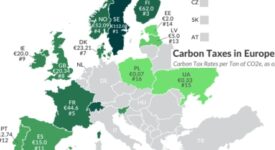Eurozone logged the inflation rate of 0.8 percent in January according to the official data of the Eurostat, the EU’s main statistical office. The inflation has leveled off at around 0.8 percent since December last year, which has partially eased worries of deflationary pressures on economic growth. A second estimate of the Eurostat revealed that year-on-year inflation in the common currency club of 18 European economies fell from 2 percent in January 2013 after dropping invariably in latest months.
In the entire European Union, that is 28 economies including the eurozone countries, the rate of inflation went down to 0.9 percent against last December’s 1 percent, which is a year-on-year decrease by 2.1 percent. The statistics will likely continue to comfort concerns of deflation and thus smoothing pressures on the Frankfurt-based European Central Bank (ECB). Due to the anxiety connected to the possibility of inflation, the ECB has been pushed toward a further easing of monetary policy.
The highest rates of inflation were logged in Britain and Finland, which went through a 1.9-percent rise. In contrast, Cyprus, Bulgaria, and Greece saw annual negative rates with -1.6 percent, -1.3 percent, and -1.4 percent respectively.
The new inflation statistics popped up amid concerns of deflation, which could pose a major threat to Europe’s still fragile economic recovery. Although EU governments have implemented austerity measures to fight the debt sovereign debt crisis, these policies have mostly caused damage to the demand side of the economy and thus shoving inflation well below the ECB’s official inflation target of 2 percent.
Deflation – a fall in the general level of prices – can make consumers postpone their consumption decisions due to the mounting expectations over further decrease in prices. This weakens demand as firms reduce their production accordingly, which in turns takes its toll on employment as well. This development can potentially lead to a downward spiral of deflation.
Article Categories:
ECONOMY & TRADE






